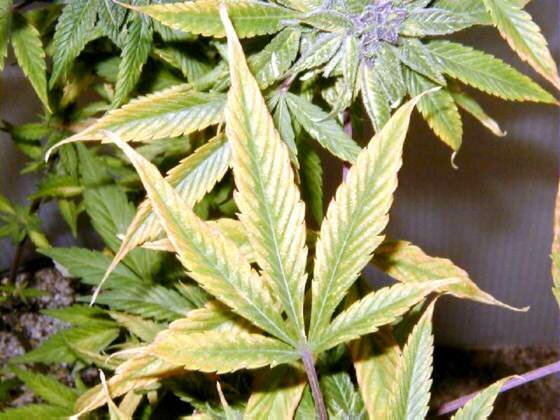The reason nutrient manufacturer’s have “discovered” molasses is the simple fact that it’s a great source of carbohydrates to stimulate the growth of beneficial microorganisms. “Carbohydrate” is really just a fancy word for sugar, and molasses is the best sugar for horticultural use. Folks who have read some of our prior essays know that we are big fans of promoting and nourishing soil life, and that we attribute a good portion of our growing success to the attention we pay to building a thriving “micro-herd” to work in concert with plant roots to digest and assimilate nutrients. We really do buy into the old organic gardening adage - “Feed the soil not the plant.”
Molasses is a good, quick source of energy for the various forms of microbes and soil life in a compost pile or good living soil. As we said earlier, molasses is a carbon source that feeds the beneficial microbes that create greater natural soil fertility. But, if giving a sugar boost was the only goal, there would be lot’s of alternatives. We could even go with the old Milly Blunt story of using Coke on plants as a child, after all Coke would be a great source of sugar to feed microbes and it also contains phosphoric acid to provide phosphorus for strengthening roots and encouraging blooming. In our eyes though, the primary thing that makes molasses the best sugar for agricultural use is it’s trace minerals.
In addition to sugars, molasses contains significant amounts of potash, sulfur, and a variety of micronutrients. Because molasses is derived from plants, and because the manufacturing processes that create it remove mostly sugars, the majority of the mineral nutrients that were contained in the original sugar cane or sugar beet are still present in molasses. This is a critical factor because a balanced supply of mineral nutrients is essential for those “beneficial beasties” to survive and thrive. That’s one of the secrets we’ve discovered to really successful organic gardening, the micronutrients found in organic amendments like molasses, kelp, and alfalfa were all derived from other plant sources and are quickly and easily available to our soil and plants. This is especially important for the soil “micro-herd” of critters who depend on tiny amounts of those trace minerals as catalysts to make the enzymes that create biochemical transformations. That last sentence was our fancy way of saying - it’s actually the critters in “live soil” that break down organic fertilizers and “feed” it to our plants.
One final benefit molasses can provide to your garden is it’s ability to work as a chelating agent. That’s a scientific way of saying that molasses is one of those “magical” substances that can convert some chemical nutrients into a form that’s easily available for critters and plants. Chelated minerals can be absorbed directly and remain available and stable in the soil. Rather than spend a lot of time and effort explaining the relationships between chelates and micronutrients, we are going to quote one of our favorite sources for explaining soil for scientific laymen.
“Micronutrients occur, in cells as well as in soil, as part of large, complex organic molecules in chelated form. The word chelate (pronounced “KEE-late”

comes from the Greek word for “claw,” which indicates how a single nutrient ion is held in the center of the larger molecule. The finely balanced interactions between micronutrients are complex and not fully understood. We do know that balance is crucial; any micronutrient, when present in excessive amounts, will become a poison, and certain poisonous elements, such as chlorine are also essential micronutrients.
For this reason natural, organic sources of micronutrients are the best means of supplying them to the soil; they are present in balanced quantities and not liable to be over applied through error or ignorance. When used in naturally chelated form, excess micronutrients will be locked up and prevented from disrupting soil balance.”
Excerpted from “The Soul of Soil”
by Grace Gershuny and Joe Smillie
That’s not advertising hype either, no product being sold there. That’s just the words of a pair of authors who have spent their lives studying, building, and nurturing soils.
Molasses’ ability to act as a chelate explains it’s presence in organic stimulant products like Earth Juice Catalyst. Chelates are known for their ability to unlock the potential of fertilizers, and some smart biological farmers we know are using chelating agents (like Humic Acid) to allow them to make dramatic cuts in normal levels of fertilizer application.
One way to observe this reaction at work would be to mix up a solution of one part molasses to nine parts water and then soak an object which is coated with iron rust (like a simple nail for instance) in that solution for two weeks. The chelating action of the molasses will remove the mineral elements of the rust and hold them in that “claw shaped” molecule that Grace and Joe just described.
As we’ve commented on elsewhere, it’s not always possible to find good information about the fertilizer benefits of some products that aren’t necessarily produced as plant food. But we’ve also found that by taking a careful look at nutritional information provided for products like molasses that can be consumed by humans, we can get a pretty decent look at the nutrition we can expect a plant to get as well.
There are many brand’s of molasses available, so please do not look at our use of a particular brand as an endorsement, our choice of Brer Rabbit molasses as an example is simply due to our familiarity with the product, one of our Grandmother’s preferred this brand.






